Record public spending has recently powered the Australian economy.
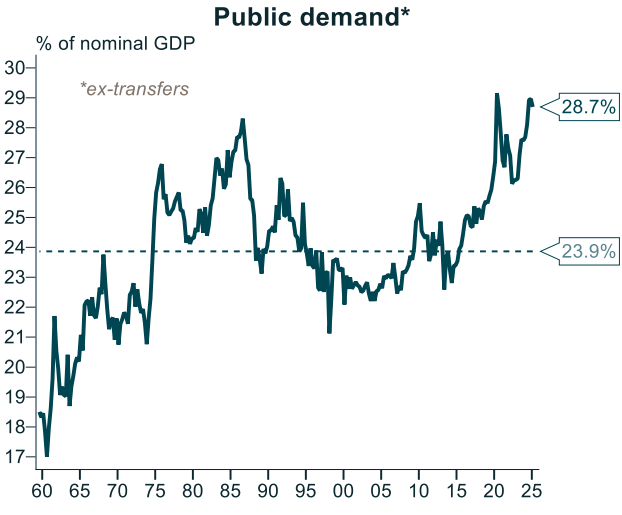
Source: Alex Joiner (IFM Investors)
At the same time, Australian households have exhibited recessionary behaviour, with real per capita household consumption tracking negative for seven consecutive quarters on an annual basis, down 2.4% from its peak.
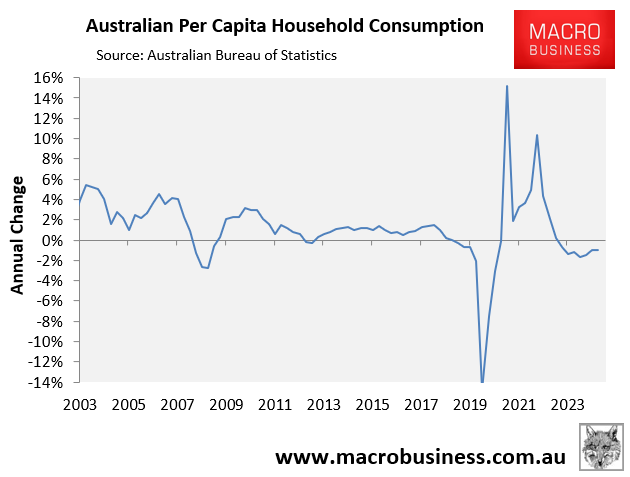
The decline in household spending, which usually accounts for about 60% of GDP growth, is the primary reason that real per capita GDP in Australia has decreased in nine of the past eleven quarters.

New analysis published by BMI—A Fitch Solutions Company—forecasts a painfully slow economic recovery despite expected ongoing interest rate cuts from the Reserve Bank of Australia (RBA).
BMI forecasts that Australia’s GDP growth will experience a “modest acceleration in 2025, with output projected to increase by 1.6%, up from 1.4% in 2024”.
“This is a downward revision from Q2 forecast of 1.9%, reflecting weaker-than-anticipated economic momentum”.
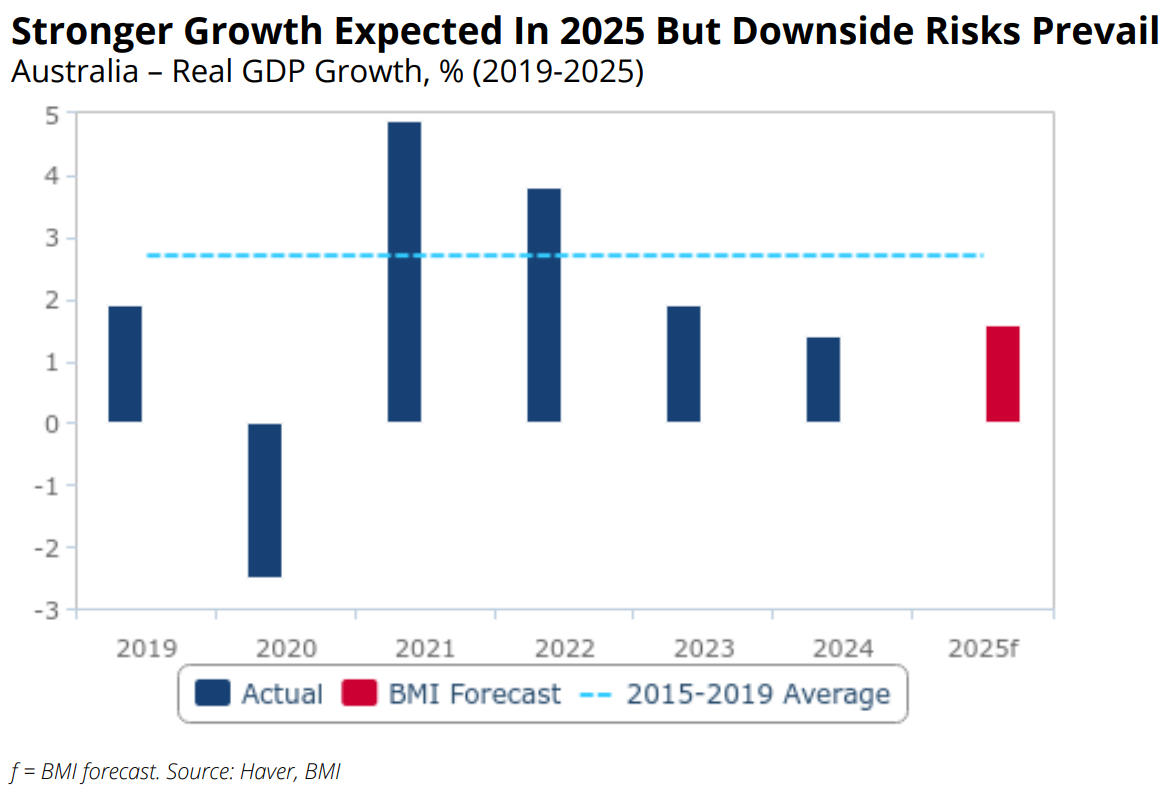
BMI notes that Australia’s high household debt remains a key barrier to growth.
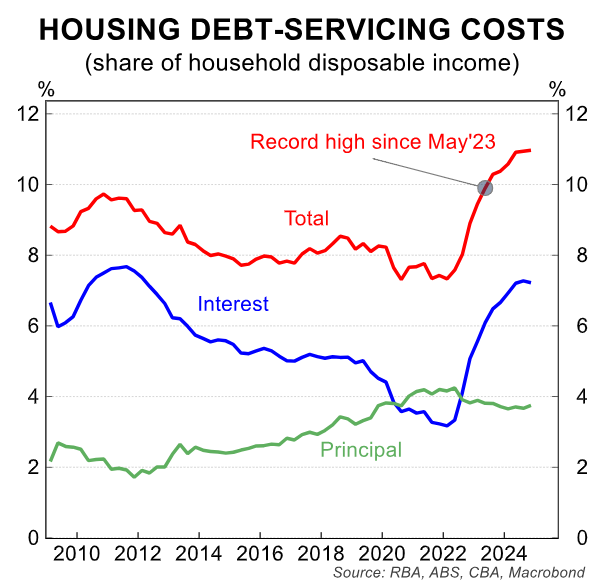
“Elevated interest rates and high levels of household and corporate leverage remain key vulnerabilities. Australian households are particularly exposed given historically high debt levels and diminished savings buffers (see chart below)”.
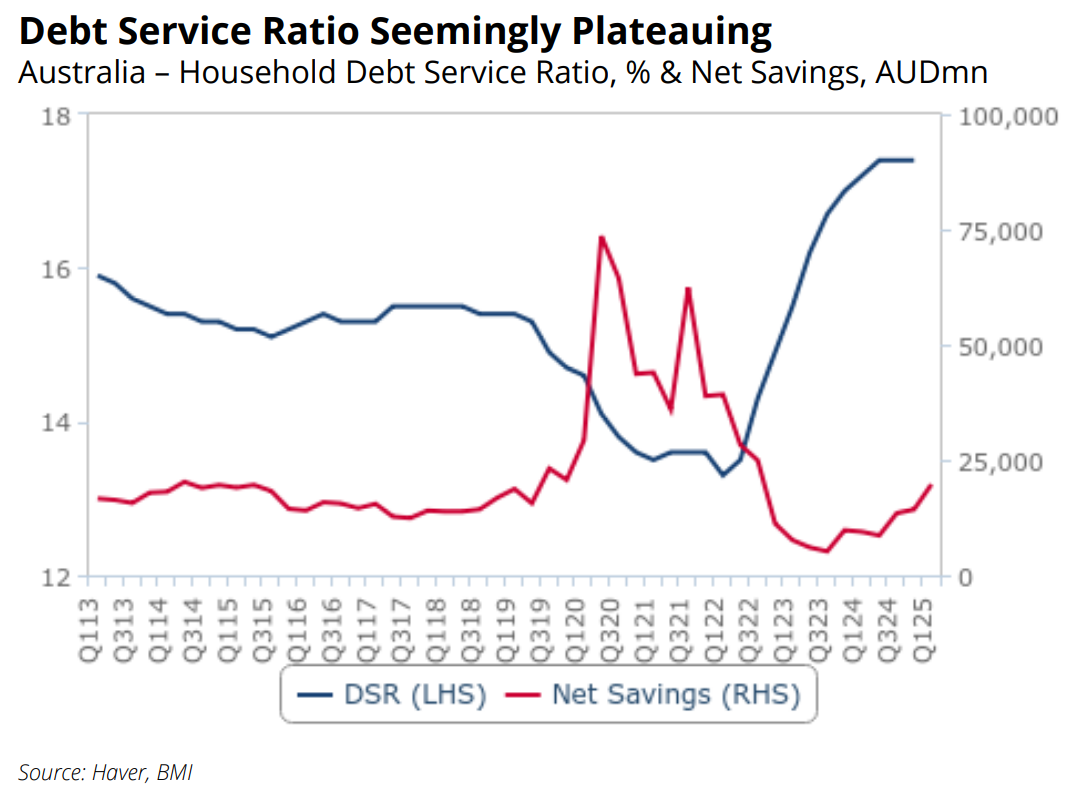
“According to Bank for International Settlements data, the average debt service ratio (DSR) for households rose to 17.4% of disposable income in Q1 2025, up from 17.2% a year earlier and well above the 13.3% recorded in Q1 2021”.
“While we expect the DSR to remain elevated in 2025, we project it to gradually moderate as the Reserve Bank of Australia continues its easing cycle”.
“As interest rates decline, household debt servicing burdens should ease, potentially improving the savings rate and creating some scope for higher consumption”.
The latest Statement of Monetary Policy (SoMP) from the Reserve Bank of Australia (RBA) forecasts that Australia’s annual population growth will slow from 1.7% in Q4 2024 to 1.5% by Q4 2025.
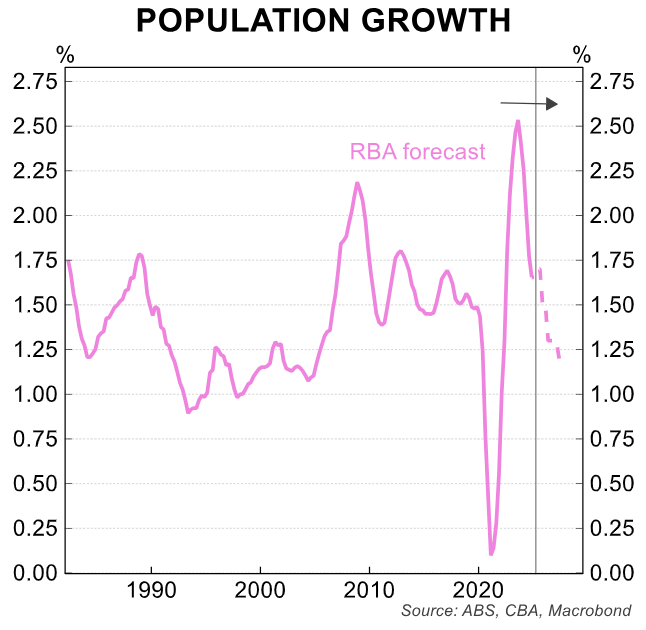
As a result, the BMI’s forecast of only 1.6% GDP growth for 2025 implies growth in per capita GDP of only 0.1% in 2025.
Australians would remain teetering on recession, stuck in the no-growth zone.

